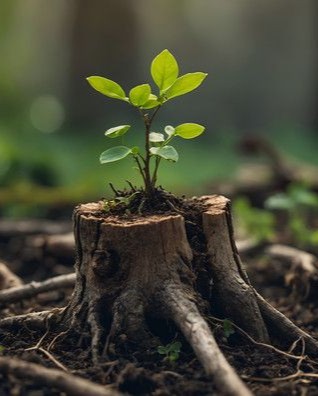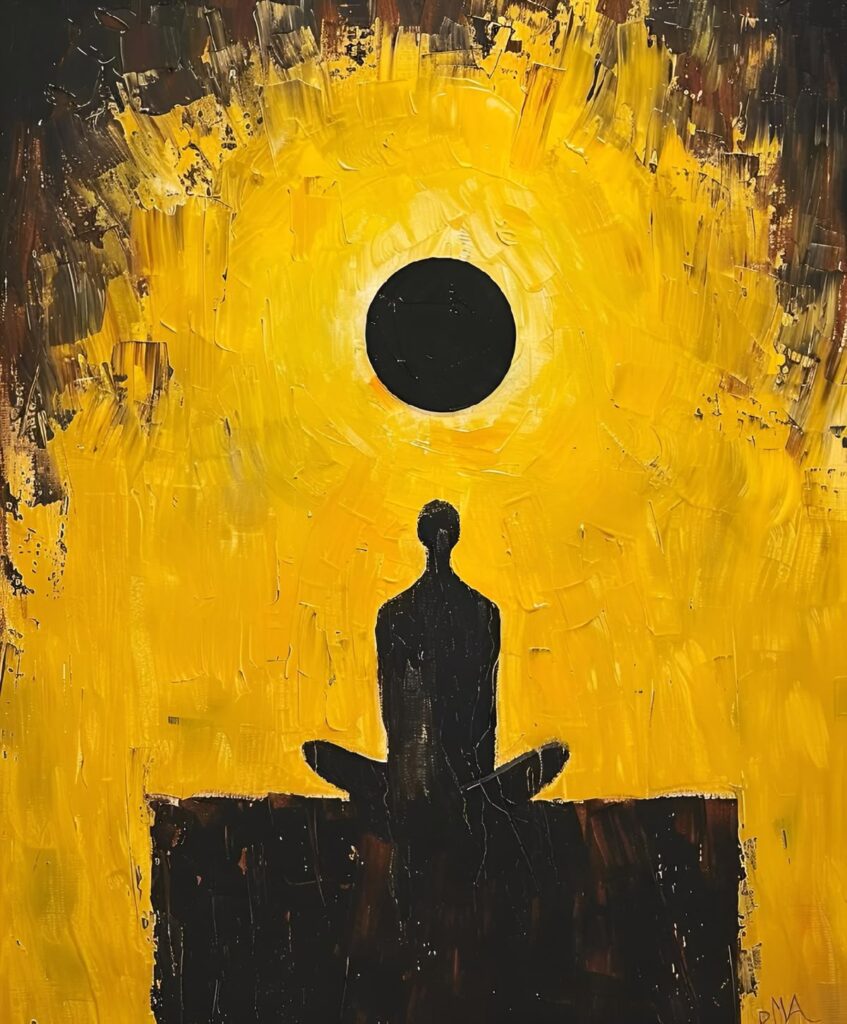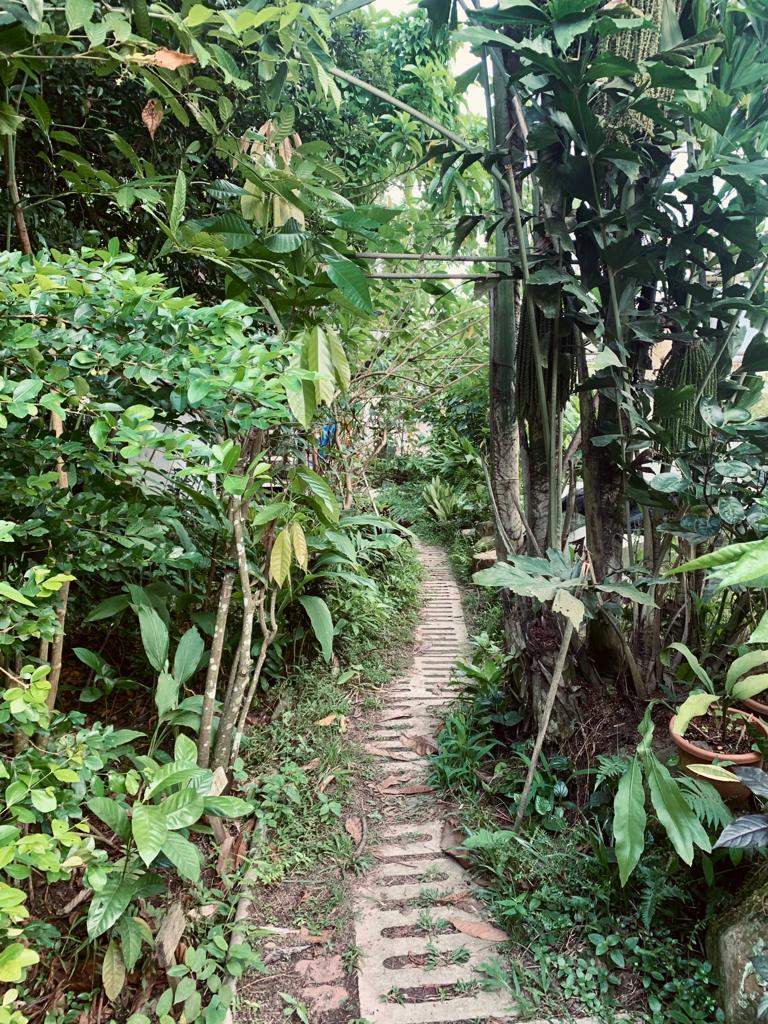“We can learn to relate creatively to our self-concept in a way that opens doors, rather than closes them. The older we get, the more important this creative capacity becomes”

Dear Integral Meditators,
This week’s article explores a creative & psycho-dynamic meditation form. The stages of it form the basis of my upcoming weekday & Saturday series on ‘how to work with your bright shadow’. If you enjoy the article, then do consider attending one program, or even both of them!
In the spirit of opening to possibilities,
Toby
Change your idea, change yourself – (Five stages to) Working creatively with your self-concept
By the time you get to adulthood, your dominant sense of self, at least for most people, is an idea. This idea is called your ‘self-concept.’ It is a dynamic collection of conditioned beliefs, assimilated past experiences, habitual emotional states, absorbed philosophies, learned behaviour and so on that you identify as ‘me’.
- “I am an extrovert”/introvert
- “I am an Asian/European/African and therefore I can/can’t….”
- “I’m an optimist/pessimist”
- “I am good at/not good at…”
You get the idea. Your self-concept is just an idea of who you are, but it is an idea that you are completely or at least very closely identified with. It defines most of how you turn up, how you behave and what you feel yourself to be capable of.
Furthermore, your self-concept has two parts, conscious and unconscious. The conscious part of yourself concept is your self-image. The unconscious part is the part that is not acceptable to your self-image, and that you repress and reject. Any part of your self-concept that you don’t like or feel threatened by, you can push into your unconscious, where it becomes a part of your shadow, or dis-owned self.
What I outline below is a way of working creatively with your self-concept, to open possibilities, rather than close them. By doing so it becomes possible to relate to our idea of ourself in a way that opens doors, rather than closes them particularly, but not only as we find ourselves getting older.
For this work, it is a good idea to take a specific area of your life and self-concept, bearing it in mind as you work your way though the five stages below…
Step one, observing – noticing the narrative, conceptual and non-conceptual
Firstly, take the position of the observer in your field of awareness, and practice, observing, listening to and accepting this part of your self-concept, and your close identification with it. For example, if you are taking your idea of self-as-parent:
- Notice the commentary within you about what a parent should or shouldn’t be, and how you are measuring up
- Observe the emotional range coming up within you, and your judgements about those emotions
- Accept whatever arises as fully as you can
At this stage I find working on accepting and observing with the qualities of curiosity, courage and care to be particularly useful.
Step two, dis-identifying – dropping the labels, badges, and roles
Secondly, practice putting down, or dis-identifying with all the labels, roles and badges that are involved in this part or aspect of your self-concept. Practice becoming a man or woman. A person of no-rank, no position in life. Practice just being a being, and enjoying the freedom of that space.
Step three, imagining – exploring new ideas of self-in-role
From your position as a person of no-rank, explore new ideas, and possibilities of yourself in the role you are working on (parenting, romantic partner, professional, etc…). Connect to new ideas and possibilities that you might integrate into this area of yourself in this role.
Step four encountering – meeting and communicating with your new self
Visualize the self that you have imagined in step three as a person in front of you. S/he looks very much like you, but embodies the qualities that you have been imagining. As you see this person in front of you, invite a communication. Ask them a question such as:
- What are you asking of me right now?
- How can I integrate you more fully into my daily life?
- What is your perspective on this situation/problem that I am facing right now??
Have a chat and see what transpires!
Step five role-playing – developing yourself in your new role
Imagine the ‘self’ in front of you steps toward you. Imagine you step toward them. Another step and you step into each other, and merge. Experience yourself AS this newly imagined self, BE them.
Once you have finished the meditation, work on role-playing this new self into your daily life. Meet your challenges AS them, particularly with regard to the specific roles you identified in step 2 above.
Related articles: Why we may repress our strengths – six reasons
The bright shadow, the one who can do what you cannot do
© Toby Ouvry 2025, you are welcome to use or share this article, but please cite Toby as the source and include reference to his website www.tobyouvry.com
Upcoming classes & workshops
Ongoing on Tuesday’s & Wednesday’s (live & online), 7.30-8.30pm – Weekly integral meditation classes
Ongoing Tuesday & Weds September, 7.30-8.30pm, – Integral Meditation from the Perspective of Zen – A 10 week series
Ongoing Saturdays 5.30-6.15pm – Zen meditation Deep-dive – A 10 session practice series
Saturday 25th October, 9am-12.30pm – Finding Freedom From What Holds You Back in Life: Practical meditations & techniques for working with your shadow-self
Starts Tuesday 11th & 12th November, 7.30-8.30pm – Going beyond your limitations, tapping into your hidden strengths – Meditating with your bright shadow, a 6-week course
Starts Saturday 5.30-6.15pm SG time – Bright shadow meditation Deep-dive – A 5 session practice series
21 Nov & 28th Nov, 8am-12pm – The wisdom of Zen meditation practice retreat & course, levels 1&2
Saturday 22nd November, 9am-12.30pm – Meditations for Developing the Language of Your Shadow Self Workshop
Saturday 29th November, 7-9pm – Living Life From Your Inner Center – Meditations for Going With the Flow of the Present Moment
Follow Toby on: LinkedIn, YouTube, Instagram
Integral Meditation Asia
Online Courses * 1:1 Coaching * Books * Live Workshops * Corporate Mindfulness Training *Life-Coaching * Meditation Technology









